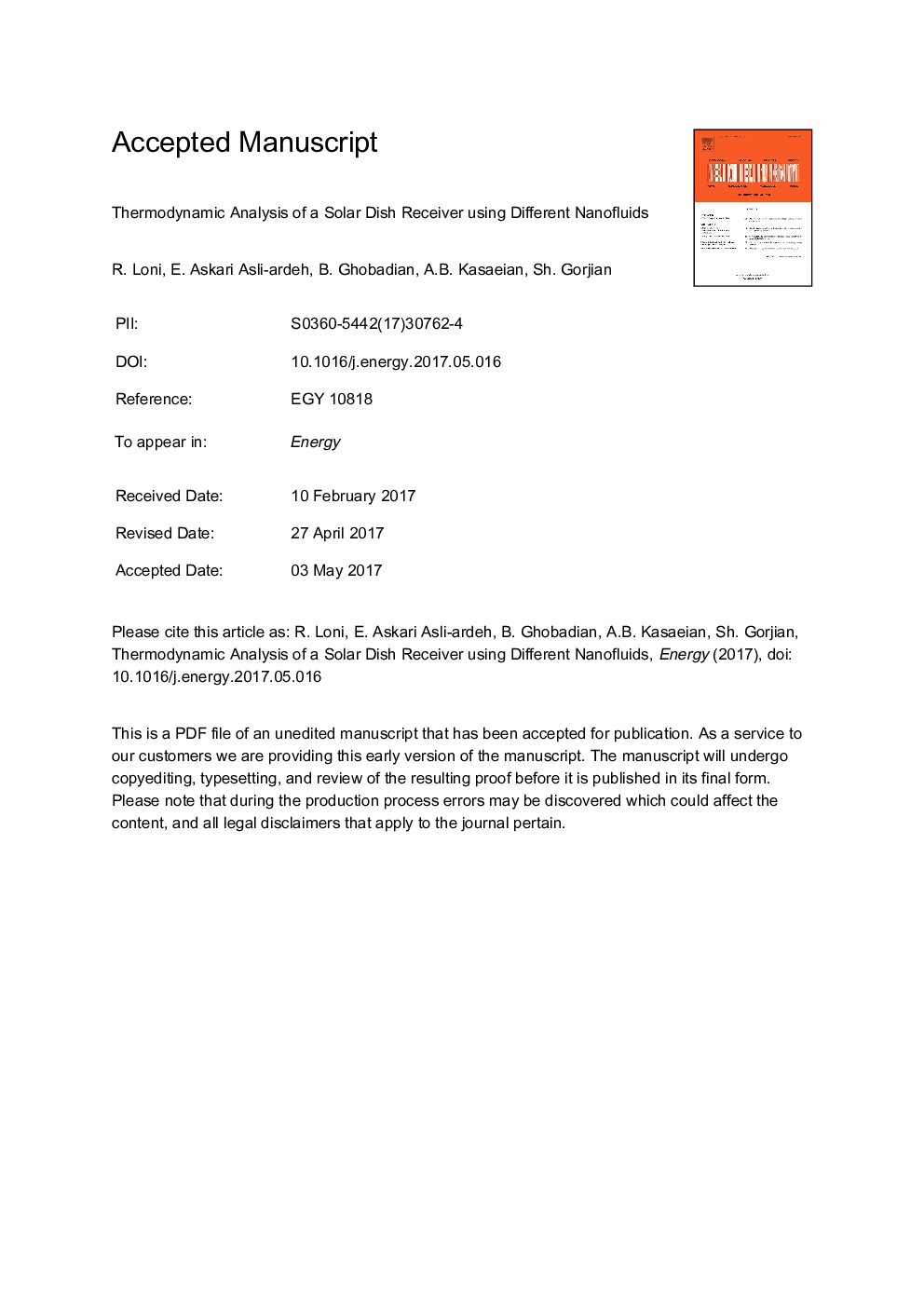| Article ID | Journal | Published Year | Pages | File Type |
|---|---|---|---|---|
| 5476594 | Energy | 2017 | 47 Pages |
Abstract
Nanofluid application as the working fluid is proposed as a way for improving the solar system performance. In this study, a dish concentrator with a cylindrical cavity receiver was numerically modeled. Four different nanofluids including Al2O3/thermal oil, Cu/thermal oil, SiO2/thermal oil, and TiO2/thermal oil, were investigated as the working fluid of the solar system. The effects of the nanoparticles concentration in the range of 0-5% on the first and second law of the thermodynamic were considered in this study. The results indicated that the thermal efficiency decreased with increasing nanoparticle volume concentration. Also, the calculated results showed that the obtained exergy and efficiency of exergy improved by increasing the nanofluid concentrations. And it can be concluded from results that the entropy generation reduced with increasing nanofluid concentrations. The Bejan number increased with enhancing the nanoparticles volume fraction. In general Cu/thermal oil nanofluid has best exergy manner among the investigated nanofluid in the cylindrical cavity receiver.
Related Topics
Physical Sciences and Engineering
Energy
Energy (General)
Authors
R. Loni, E. Askari Asli-ardeh, B. Ghobadian, A.B. Kasaeian, Sh. Gorjian,
